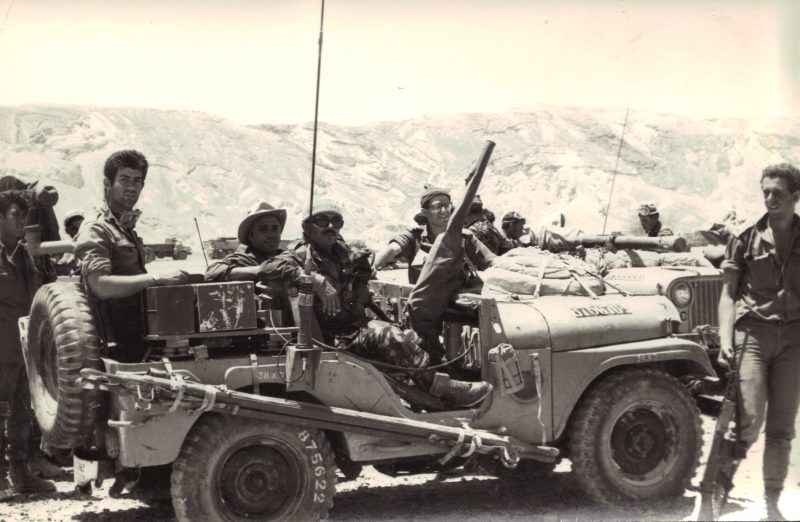Israel’s military archives have released testimonies from generals that give details into Israel’s capture of Jerusalem’s Old City in the 1967 Six-Day War.
Israel’s Defense Forces looked to learn lessons from the conflict, where Israel took over the West Bank, Sinai Peninsula, and Golan Heights from Arab armies. To this day, 49 years later, whole pages have been removed for security reasons.
The IDF chief during the fighting was Yitzhak Rabin. He described how the Egyptian army’s entry into Sinai on May 17th convinced Israel that a new situation had developed in the Middle East.
“From everything said, it was increasingly clear that the Arab side had entered a mode of ecstatic thinking … following what they saw as a success in the move of concentrating those forces,” Rabin said in 1969. “Temperatures in the area were rising, if I’m not mistaken, to a fever pitch not seen since 1956. What remained to be seen at that point was the extent this ecstasy would lead to an act that could be deemed an act of war.”
Over the next few days, the IDF worried about Egypt attacking the nuclear reactor at Dimona or isolating the straits of Tiran to the south, thereby closing off Israel’s sea route to the world. In his testimony, Rabin told of the threat that the Arab armies might not leave, which could have broken Israel’s economy and forced it to attack. If the IDF had done nothing, they would eventually have had to fight anyway.
What Rabin didn’t believe could happen was for Israel to stand down and surrender the Straits. “I’m convinced it wouldn’t have ended like that. The IDF always employed an organizational assumption that it needed to be prepared for war at all times,” Rabin said. “Despite that, I must say, if I’d been asked in early May – and I think I was asked – if there would be war on June 5, 1967, I would have doubted it. I thought it would be a more difficult battle, with more casualties and a longer duration required than actually happened,” he said.
Testimony from Major General Uzi Narkiss, who led the Central Command during the war, shows how the IDF had plans for conquering the West Bank in three days. He remembered that before the war he told reserve officers in the 4th Brigade, “I don’t know if something will happen, but if it does, within 72 hours we’ll drive out all the Arabs from the West Bank.”
On June 5, Narkiss was ordered to prepare for war. During the preparations, Narkiss phoned Jerusalem Mayor Teddy Kollek. “It’s war; everything’s in order,” he told Kollek, according to his testimony. “You’ll yet be the mayor of a united Jerusalem. We’re enjoying great success; the armored forces are already inside.”
On the morning of June 6, Defense Minister Moshe Dayan wouldn’t allow the IDF to enter the Old City. Then, on June 7th at 6:!5 am, he changed course and ordered the army to enter the city but not to go into the Al-Aqsa Mosque or the Western Wall area. Narkiss recalled discussing the situation with Haim Bar-Lev, the deputy chief-of-staff. “There’s a risk of cease-fire,” Ber-Lev had said. “We have to finish this operation, surround Jerusalem and enter the Old City.”
Another concern that Narkiss recalled was looting in the areas that Palestinians had left. He asked Major General Shlomo Lahat whether he was suited to lead the forces in the Old City. He asked him whether he was willing to order the troops to shoot Jews involved in looting. Lahat’s response was a decisive, “Yes.”
At 9:50am on the 7th, Gur reported that the shelling had ended in the Muslim Quarter. “We’re at the far corner of Lions’ Gate,” he said. “I grabbed Rabbi Goren on my way and offered him a ride. He refused and ran off with a Torah scroll in one hand and the shofar in the other, limping along.”
At 10:00am, they had come to the northeastern corner of the Old City wall. Narkiss tossed a smoke grenade to provide cover for his troops trying to reach the gate and enter the Old City. That is when Gur made the famous statement, “The Temple Mount is in our hands.”
According to Narkiss, “Dayan got himself ready to be photographed, and then realized it wasn’t quite right, so he brought over the chief of staff to stand beside him.” Then, he asked Narkiss to join them. This is one of the famous photos taken after the Old City was claimed by the IDF. “We got there, went in, visited the mosque and then the Western Wall. Dayan put a note in, asking for peace. He ordered me to physically open the Old City’s gates and then leave them closed, under the protection of soldiers, to prevent the free flow of traffic.”
Narkiss also recalled meeting with Jews from other countries. “I told them in English that this was one of the greatest wars of the Jewish people, one of our greatest victories.”
